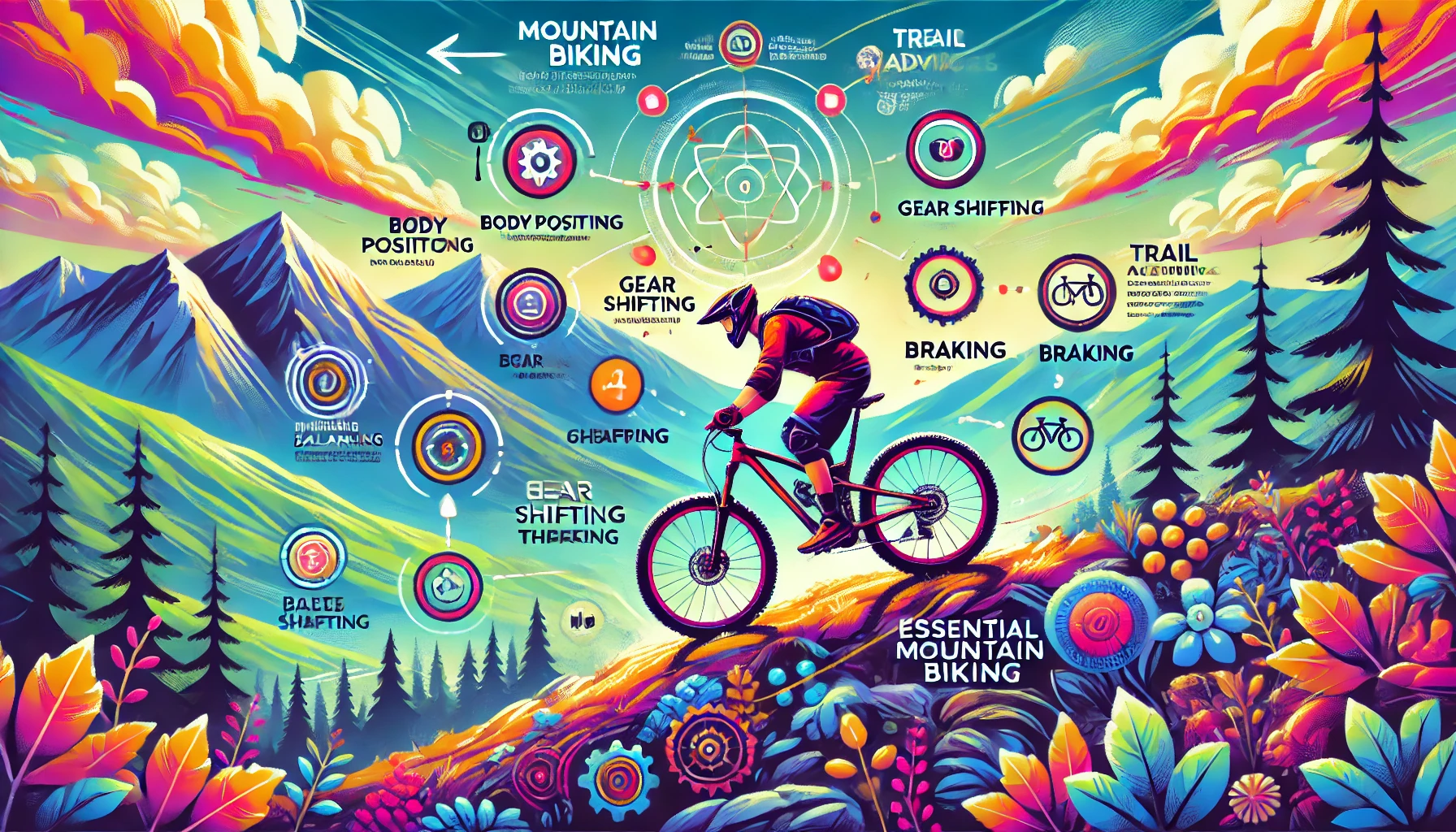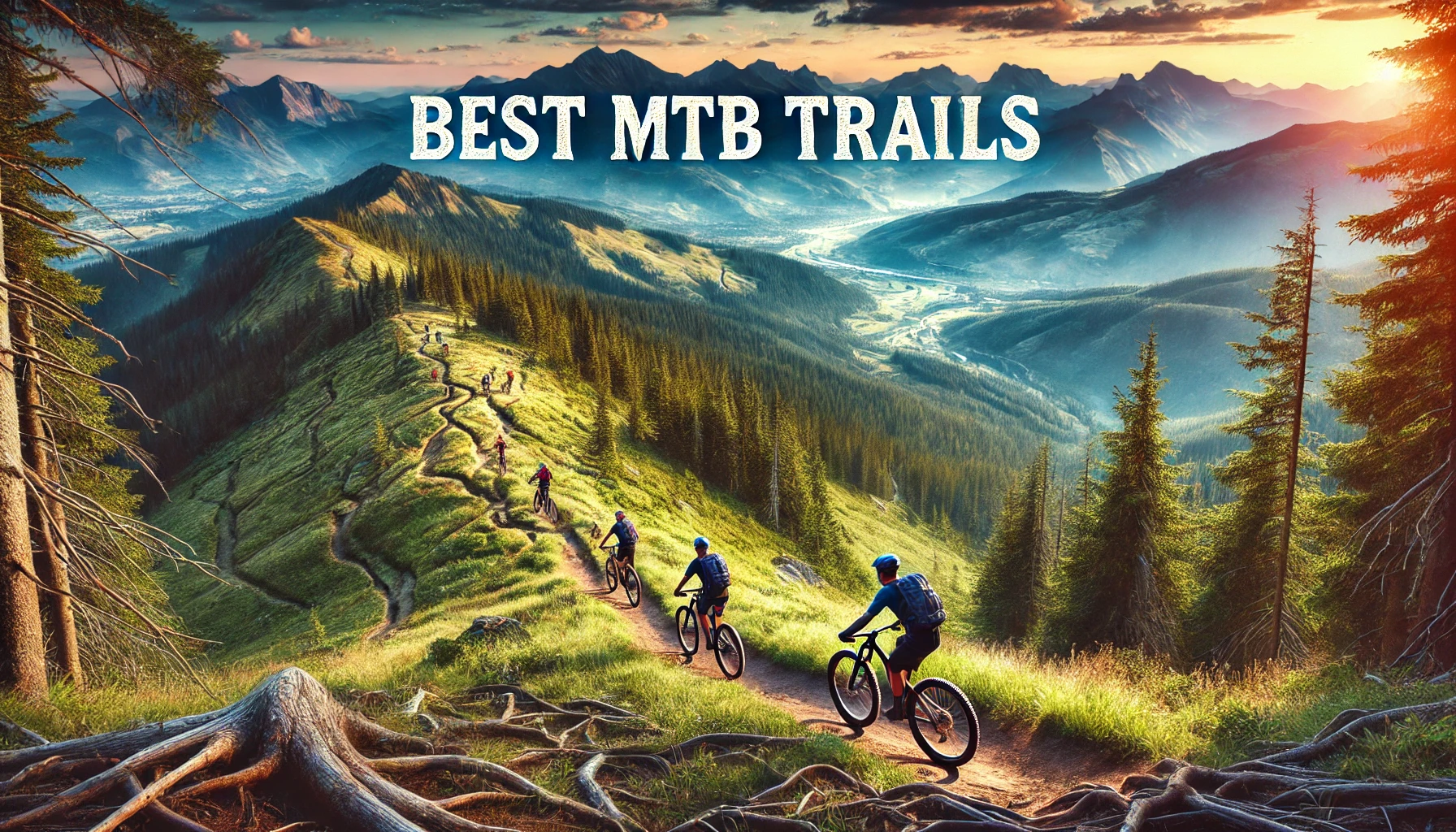Mountain biking is an exhilarating way to explore the great outdoors, get fit, and push your limits. Whether you’re a beginner looking to hit the trails for the first time or an experienced rider seeking to improve your skills, there are always ways to enhance your mountain biking experience. In this guide, we’ll cover essential mountain biking tips for all levels, from choosing the right gear to mastering techniques that will help you ride with confidence and control.
1. Choose the Right Bike
Your mountain bike is the most critical piece of equipment, and choosing the right one can make a huge difference. Here’s what to consider:
- Bike Type: There are different types of mountain bikes designed for specific riding styles. Cross-country (XC) bikes are built for speed and climbing, trail bikes are versatile for various terrains, and downhill bikes are ideal for steep descents. For beginners, a trail bike is usually a good all-rounder.
- Suspension: You can choose between a hardtail (front suspension only) or a full-suspension bike (front and rear suspension). Hardtails are lighter and more affordable, while full-suspension bikes offer better control on rough terrain.
- Fit: Make sure your bike fits you properly. Your local bike shop can help you adjust the saddle height, handlebar position, and other settings to ensure comfort and efficiency while riding.
2. Wear the Right Gear
Safety and comfort are key when mountain biking, so it’s essential to wear the right gear:
- Helmet: Always wear a quality helmet that fits securely. A mountain biking-specific helmet offers better coverage for the back of your head.
- Gloves: Padded gloves improve grip, protect your hands, and absorb shock.
- Protective Gear: For more aggressive trails, consider wearing knee pads, elbow pads, and even a full-face helmet.
- Footwear: Stiff-soled shoes provide better power transfer and control. Clipless shoes or flat pedals with grippy soles are common choices.
- Hydration Pack: Mountain biking can be demanding, so carrying a hydration pack ensures you stay hydrated on long rides.
3. Master Basic Bike Handling Skills
Before tackling challenging trails, get comfortable with basic bike handling skills. Here’s where to start:
- Body Position: Keep your body relaxed and centered over the bike. When descending or tackling rough terrain, shift your weight back and bend your knees and elbows to absorb shocks.
- Braking: Learn to brake smoothly and evenly using both the front and rear brakes. Avoid skidding, which can cause loss of control. Practice modulating your brakes to slow down rather than coming to an abrupt stop.
- Cornering: Look ahead and focus on where you want to go, not the obstacles. Lean the bike into the turn while keeping your body upright. Shift your weight slightly forward when entering the turn, then back as you exit.
- Shifting Gears: Anticipate changes in terrain and shift gears early to maintain momentum. Use lower gears for climbs and higher gears for flats and descents.
4. Build Your Fitness and Endurance
Mountain biking is physically demanding, especially on longer trails with climbs and technical sections. Improving your fitness will enhance your riding experience:
- Cardio Training: Incorporate cardio exercises like running, cycling, or rowing into your routine to build stamina.
- Strength Training: Focus on building leg strength (squats, lunges) and core stability (planks, crunches) to improve power and balance on the bike.
- Interval Training: High-intensity interval training (HIIT) mimics the bursts of energy needed in mountain biking and improves your ability to recover quickly.
5. Learn Trail Etiquette
Respect for other trail users and the environment is essential in mountain biking:
- Yield Appropriately: Give way to hikers and uphill riders. When passing, communicate politely and slow down.
- Stay on the Trail: Don’t cut switchbacks or create new trails, as this damages the environment and leads to erosion.
- Leave No Trace: Pack out all trash and be mindful of trail conditions. If the trails are muddy, it’s better to postpone your ride to avoid causing ruts.
6. Start with Beginner-Friendly Trails
It’s tempting to jump straight into challenging trails, but starting with beginner-friendly routes will help you build confidence. Look for trails rated as “green” or “easy” that have wide paths, gentle slopes, and fewer obstacles. As your skills improve, you can gradually progress to more technical “blue” and “black” trails.
7. Practice on Technical Terrain
Once you’re comfortable with basic skills, start practicing on more technical terrain. Here are some techniques to master:
- Rock Gardens: Keep your momentum, stay light on the bike, and let the bike move beneath you as you navigate rocks.
- Drops: As you approach a drop, shift your weight back and lift the front wheel slightly before letting the rear wheel follow.
- Climbing: For steep climbs, shift to a lower gear, lean forward, and keep your cadence steady. Use your core and leg strength to maintain traction.
8. Ride with Experienced Riders
Riding with more experienced bikers is one of the best ways to learn. They can provide valuable tips, show you new trails, and help you improve your technique. Group rides also offer the added benefit of safety, especially when exploring remote or unfamiliar areas.
9. Maintain Your Bike Regularly
A well-maintained bike is essential for both performance and safety. Here’s a basic maintenance checklist:
- Check Tire Pressure: Ensure your tires are properly inflated based on the trail conditions.
- Lubricate the Chain: A clean and lubricated chain reduces wear and tear and ensures smooth shifting.
- Inspect Brakes and Cables: Regularly check that your brakes are responsive and cables are in good condition.
- Tighten Bolts: Before every ride, inspect your bike to ensure that all bolts are tight and nothing is loose.
10. Keep Pushing Yourself
Mountain biking is all about progression. Don’t be afraid to challenge yourself by trying new trails, learning advanced techniques, and setting goals. Whether it’s clearing a technical section for the first time or completing a tough climb, the sense of accomplishment is what makes mountain biking so rewarding.
Conclusion
Mountain biking is a sport that offers endless adventure and excitement. By following these tips, you’ll build a solid foundation that allows you to explore trails with confidence, enjoy the beauty of nature, and continually improve as a rider. Remember to stay patient, practice regularly, and, most importantly, have fun out there on the trails!


